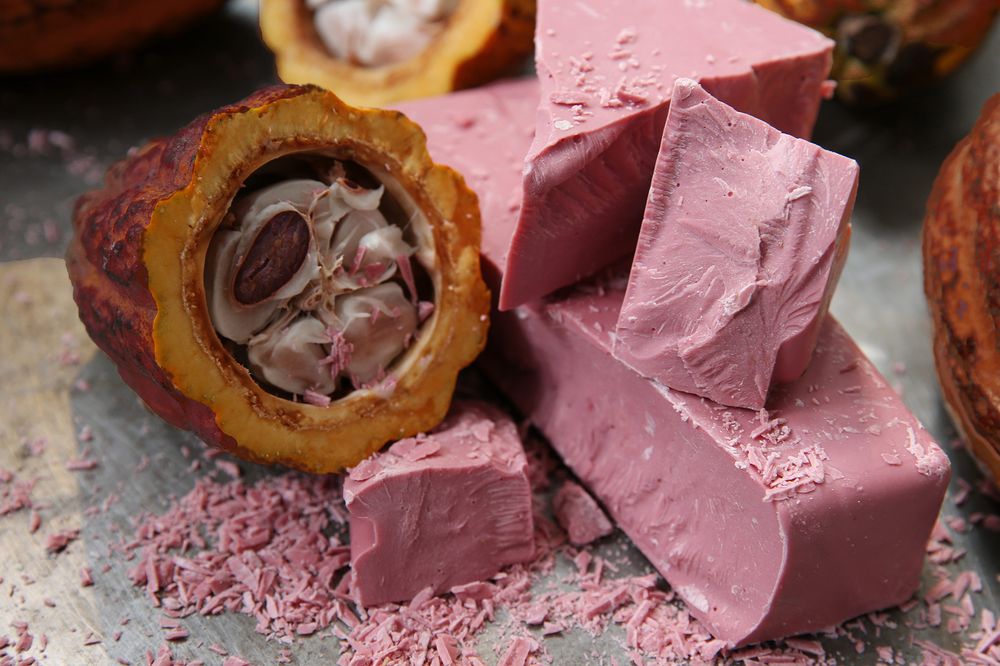

Willy Wonka has nothing on this Swiss chocolatier.
Barry Callebaut, creators of the coveted “ruby chocolate,” says they’re finally bringing the pink-hued sweet stateside. The announcement comes two years after the new class of cocoa went public, and one year after the pink KitKat first appeared in Japan. Though the company still needs FDA approval to call the rose-colored bars “chocolate,” American consumers have been eagerly awaiting the domestic debut of the first new chocolate color in over 80 years.
But how exactly Barry Callebaut produces such blush-colored bars without artificial colors is still a matter of some debate. The manufacturer is treating the process as a closely-guarded trade secret, though some industry insiders think they’re narrowing in on the truth.
Regular ol’ brown chocolate is made by drying and fermenting the bitter beans of the cacao tree until they’re edible—something Mesoamericans have been doing for almost 4,000 years. The resulting cocoa can then be heated into a liquor, which separates cocoa solids and cocoa butter. The solids and butter are then mixed back together in product-specific ratios; the more solids yu have, the more chocolatey flavor inside (though the cacao percentage you see printed on the label is the total mass of butter and solids). Most candy has milk and sugar mixed in, too.
In 2017, Peter Boone, Barry Callebaut’s chief innovation and quality officer, told the Guardian that the company derives its pink chocolate from a “ruby” cacao bean that grows in Ivory Coast, Ecuador, and Brazil (and presumably went undiscovered and unutilized until the Swiss team discovered it). But chocolate-makers speculate the bars are simply made from regular but unfermented cocoa, which has always had a subtle pink hue.
This may also explain the unusual flavor profile of the Instagrammable treat. Barry Callebaut reportedly describes it as a “natural berry flavor that’s sour yet sweet.” But a journalist who tried it at an event in Shanghai was more fixated on the absence of traditional cocoa flavor, which chocolate typically develops only through processing.
“Cacao before fermentation, it’s not really chocolate—it’s cacao,” Luke Owen Smith, a New Zealand chocolatier, told a local news outlet. “Unfermented cacao is really not that pleasant, and I would imagine that they are having to add in a lot of sugar and milk and probably other things to make that taste anywhere near palatable.” For it’s part, though, Barry Callebaut has promised several variations of the rosy desert, including one without milk. It is unclear if those bars have yet materialized.
The FDA process may illuminate new facets of this chocolate ruby, but perhaps the best evidence we have to go on is a 2009 patent filed by Barry Callebaut with the European Patent Office. The documents detail a way to make a “cocoa-derived material red or purple” by minimizing fermentation (3 days or less), treating the product with an acid, and using petroleum ether to remove fatty acids. This treatment could create a new color or preserve a valued hue that might otherwise be lost in production.
Of course, many patents are downright fanciful, companies file for intellectual property protections on ideas they never intend to develop, and best practices can evolve long after an initial filing is made. But these clues may well provide a behind-the-scenes look at how the chocolate gets made.
